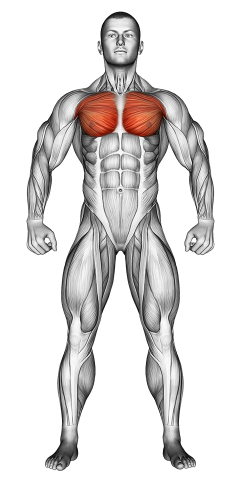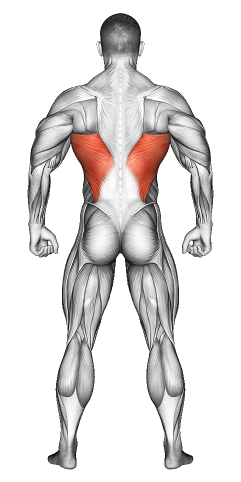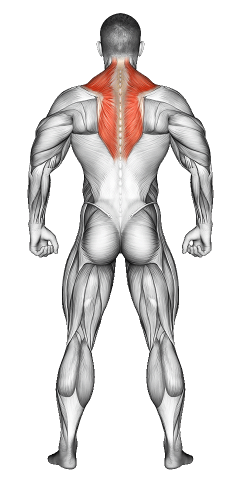T-Position Wall Chest Stretch: Video Tutorial & Stretch Guide

Written By: Claude Michael
Updated: Dec 18, 2024
| Workout | T-Position Wall Chest Stretch |
| Primary Muscle Group | Chest |
| Secondary Muscle Group | Shoulders, Lats |
| Equipment Required | Wall or sturdy surface |
| Force Type | Static Stretch |
| Mechanics | Isolation |
| Exercise Type | Flexibility and Mobility |
| Difficulty | Beginner |
T-Position Wall Chest Stretch: Video Tutorial & Stretch Guide
- 1.T-Position Wall Chest Stretch: Muscle Groups
- -1.1Primary Muscle Group
- -1.2Secondary Muscle Group
- 2.T-Position Wall Chest Stretch: Step-by-Step Guide
- 3.T-Position Wall Chest Stretch: Overview
- 4.T-Position Wall Chest Stretch: Benefits
- 5.T-Position Wall Chest Stretch: Pro Tips & Advanced Techniques
- 6.T-Position Wall Chest Stretch: Progression Plan
- 7.T-Position Wall Chest Stretch: Frequently Asked Questions (FAQs)
T-Position Wall Chest Stretch: Step-by-Step Guide
- Step 1: Stand next to a wall with your body facing forward. Extend your right arm out to the side at shoulder height, forming a “T” shape. Place your palm flat against the wall, keeping your arm fully extended.
- Step 2: Turn your body gently away from your extended arm, opening up your chest. Keep your arm straight and feel a stretch across your chest and shoulder. Keep your posture tall and avoid slouching.
- Step 3: Hold this position for 15-30 seconds, breathing deeply. With each exhale, try to relax further into the stretch, letting your chest open up more.
- Step 4: Return to the starting position by turning back toward the wall and releasing your hand. Switch sides and place your left arm on the wall, turning your body away to feel the stretch on the opposite side.
- Step 5: Repeat this stretch on each side 2-3 times. With each repetition, aim to open your chest a little more, gradually increasing flexibility and relieving tension.
T-Position Wall Chest Stretch: Overview
The T-Position Wall Chest Stretch helps you open up tight chest and shoulder muscles, improving flexibility and relieving tension. This stretch is perfect for anyone who spends long periods sitting or doing upper body workouts. It supports better posture and shoulder mobility, making daily movements easier and more comfortable.
T-Position Wall Chest Stretch: Benefits
The T-Position Wall Chest Stretch releases tension in the chest and shoulders, which helps improve posture and reduce tightness. By practicing this stretch regularly, you increase flexibility and prevent injury in your upper body. It’s a simple but effective addition to any upper body warm-up or cooldown.
T-Position Wall Chest Stretch: Pro Tips & Advanced Techniques
- Keep Shoulders Down: Relax your shoulders to avoid lifting them. Focus on keeping the stretch in your chest.
- Breathe Deeply: Inhale deeply, and with each exhale, try to relax and open your chest more.
- Avoid Over-Rotating: Rotate only until you feel a comfortable stretch—don’t twist too far or force it.
- Increase Stretch Gradually: As you get more flexible, try turning slightly more to deepen the stretch over time.
T-Position Wall Chest Stretch: Progression Plan
Beginner
Intermediate
Advanced
T-Position Wall Chest Stretch: Frequently Asked Questions (FAQs)
What muscles does the T-Position Wall Chest Stretch work?
+It stretches the chest and shoulders, helping release tightness and increase flexibility.
Can I add the T-Position Wall Chest Stretch to any workout?
+Yes! This stretch works well in any upper body warm-up or cooldown. Use it to relax and open your chest and shoulders.
Does the T-Position Wall Chest Stretch improve posture?
+Absolutely. Stretching your chest opens up your shoulders, which supports better posture over time.
How often should I do the T-Position Wall Chest Stretch?
+Include it in your routine 3-4 times a week, especially if you sit a lot or work out your upper body frequently.
What mistakes should I avoid?
+Avoid over-rotating or letting your shoulders rise. Focus on smooth, controlled movements and deep breathing for the best results.
Share
Don’t Wish for It, Work for It – Join the FlexXP Newsletter Today!
Thank you for signing up for the FlexXP Newsletter!
This site is protected and the Google Privacy Policy and Terms of Service apply.


